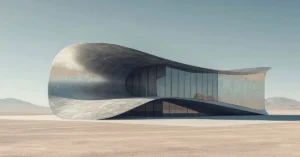The Rise of Smart Cities: How Architects are Shaping the Future in 2024

The concept of smart cities has emerged as a transformative trend in the field of architecture, reshaping urban landscapes and revolutionizing the way we interact with our environment. In 2024, architects are at the forefront of this movement, leveraging technology and innovative design principles to create cities that are sustainable, efficient, and responsive to the needs of their residents. From integrating renewable energy sources to reimagining urban transportation, the evolution of smart cities is shaping the future of architecture in profound ways.
1. Integrating Technology with Urban Planning
In the quest to build smarter cities, architects are integrating information and communication technology (ICT) with urban infrastructure and services. This holistic approach allows for:
- Data-driven Decision Making: By harnessing data analytics and real-time monitoring systems, cities can optimize resource allocation and improve service delivery.
- Efficient City Operations: Integrated ICT systems enable seamless communication between various city departments, streamlining processes and enhancing overall efficiency.
- Enhanced Civic Engagement: Smart cities empower citizens by providing platforms for feedback and participation in the decision-making process, fostering a sense of community ownership.
2. Redefining Urban Transport
The traditional model of urban transportation is undergoing a paradigm shift, driven by the need for sustainability and efficiency. Architects are spearheading initiatives to transform urban mobility through:
- Promotion of Public Transit: Smart cities prioritize public transportation systems, investing in infrastructure and technologies to enhance accessibility and reliability.
- Encouragement of Active Transport: Pedestrian-friendly infrastructure and cycling networks are integrated into urban design, promoting healthier and more sustainable modes of transportation.
- Adoption of Electric Vehicles: From electric buses to bike-sharing programs, smart cities are embracing clean energy solutions to reduce emissions and combat air pollution.
3. Powering the City with Renewables
The transition to renewable energy sources is a cornerstone of smart city development, with architects leading the charge in implementing sustainable energy solutions. Key initiatives include:
- Solar Power Integration: Rooftop solar panels and solar farms are integrated into urban landscapes, harnessing the sun’s energy to power homes, businesses, and public facilities.
- Wind Energy Utilization: Wind turbines and wind farms are strategically deployed to capitalize on renewable wind energy resources, supplementing the city’s power grid.
- Smart Grid Implementation: Intelligent grid systems enable efficient energy distribution and consumption, optimizing resource utilization and reducing reliance on fossil fuels.
4. Towards Zero Waste
Addressing the challenge of waste management is essential for creating sustainable and resilient cities. Architects are pioneering innovative solutions to minimize waste and promote recycling:
- Smart Waste Management Systems: Sensor-equipped bins and smart waste collection vehicles optimize waste collection routes, reducing fuel consumption and emissions.
- Waste-to-Energy Conversion: Advanced waste-to-energy technologies transform organic waste into renewable energy sources, reducing landfill usage and mitigating environmental impact.
- Circular Economy Initiatives: Smart cities embrace the principles of a circular economy, promoting resource recovery and reuse to minimize waste generation and maximize resource efficiency.
5. Innovative Solutions for Water Sustainability
Water scarcity is a pressing issue facing many urban areas, prompting architects to develop innovative technologies and strategies for water conservation and management:
- Smart Water Metering: IoT-enabled water meters monitor usage in real-time, enabling residents and utilities to identify leaks and optimize water consumption.
- Greywater Recycling Systems: Greywater recycling systems capture and treat wastewater from sinks and showers for non-potable uses, reducing strain on freshwater resources.
- Stormwater Management: Green infrastructure such as rain gardens and permeable pavements help mitigate flooding and improve water quality by absorbing and filtering stormwater runoff.
6. Smart Buildings and IoT Integration
The integration of Internet of Things (IoT) technology into building design is revolutionizing the way we interact with our built environment. Architects are leveraging IoT to create smarter, more sustainable buildings with:
- Energy-Efficient Systems: Smart HVAC systems, lighting controls, and occupancy sensors optimize energy usage based on occupancy patterns and environmental conditions.
- Occupant Comfort and Wellness: IoT-enabled building systems monitor indoor air quality, temperature, and lighting levels to create healthier and more comfortable indoor environments.
- Building Automation and Management: IoT platforms allow for remote monitoring and control of building systems, improving operational efficiency and reducing maintenance costs.
Conclusion
In conclusion, the rise of smart cities represents a paradigm shift in urban design and architecture, driven by the principles of sustainability, efficiency, and innovation. Architects play a crucial role in shaping the future of smart cities, leveraging technology and design expertise to create urban environments that are resilient, inclusive, and responsive to the needs of their inhabitants.
By integrating renewable energy sources, reimagining urban transportation, and implementing innovative solutions for waste and water management, architects are paving the way for a more sustainable and livable future. As we continue to embrace the possibilities of smart city development, collaboration between architects, urban planners, policymakers, and citizens will be essential to building cities that are truly smart, resilient, and inclusive.
If you’re interested in learning more about architecture firms in Europe, check out this comprehensive list of the top 50 firms compiled by Archgyan. From innovative startups to long-established industry leaders, this list has it all. Take a look and discover some of the most inspiring and influential architecture firms in Europe today.
If you’re interested in architecture and want to learn more about this amazing field, subscribe to our podcast on youtube
For more SketchUp tutorials, head to https://www.sketchupguru.com













